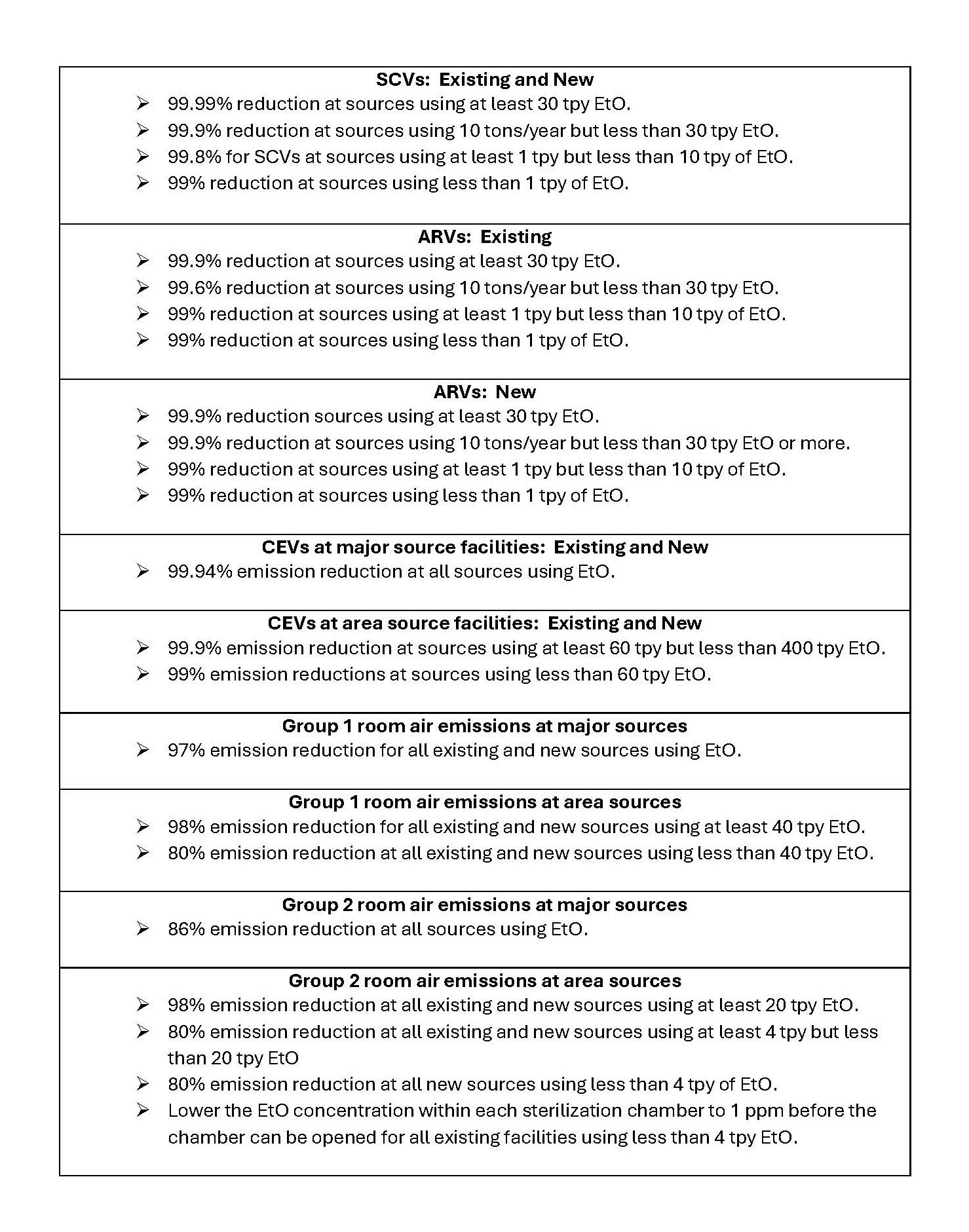The EPA Administrator has signed a final ethylene oxide sterilizer rule. This rule is being submitted to the Federal Register for publication.
Here is a quick summary of what the EPA final rule WILL do:
- This rule will set a variety of tougher limits for currently regulated emission from ethylene oxide sterilizers under National Emission Standards for Hazardous Air Pollutants (NESHAP) 40 CFR 63, Subpart O.
- The rule will also affect facility types that are not currently subject to controls under the existing wording of NESHAP 40 CFR 63 Subpart O.
- The rule sets a compliance range of between two (2) to three (3) years, following the effective date of the rule, depending on the specific facility type.
- The effective date of the rule is upon publication in the Federal Register.
Here’s a quick summary at what the EPA final rule WILL NOT do:
- Monitors will not be required because sterilizers are able to ensure “permanent total enclosure” of their air emissions.
- Stand-alone warehouses that do not use ethylene oxide and are not included within the affected source category definition.
So, what does this mean for control requirements associated with ethylene oxide (EtO) sterilizers? Well, it depends on if you are a major source or an area source, and if your facilities are existing or new. The applicability of the control requirements within the rule are complex and depend on the category of the facility. The categories are broken down as follows:
- Sterilization Chamber Vents (SCV)
- Aeration Room Vents (ARV)
- Chamber Exhaust Vents (CEV), and
- Room Air Emissions.
What does this mean for the EtO control requirements themselves? Let’s find out:



